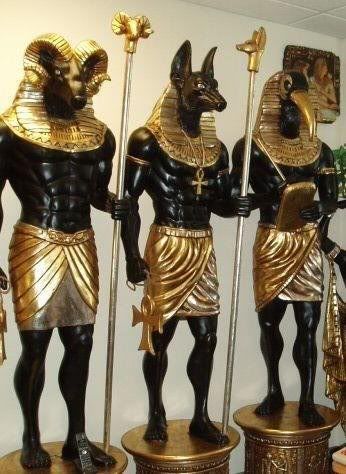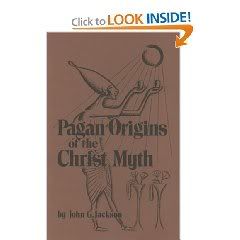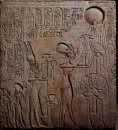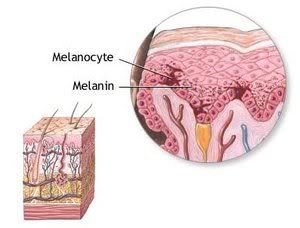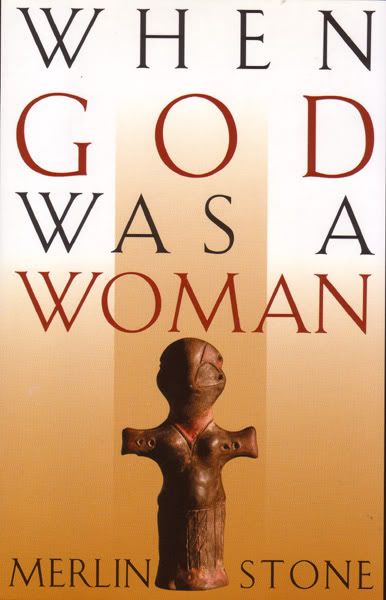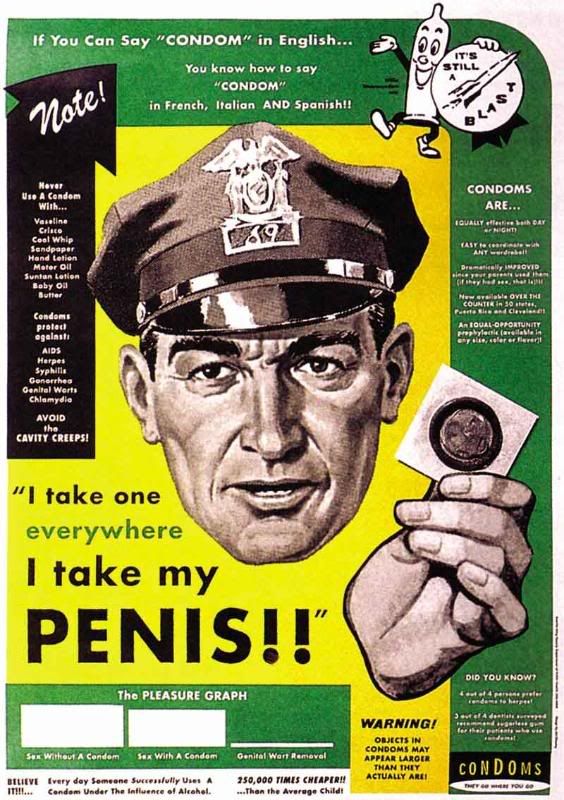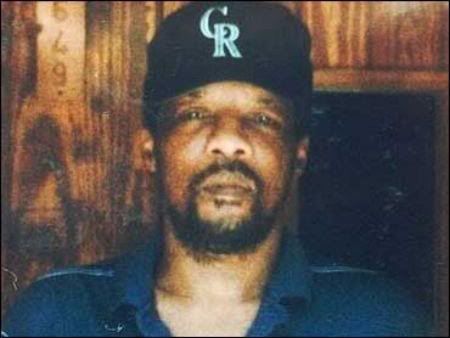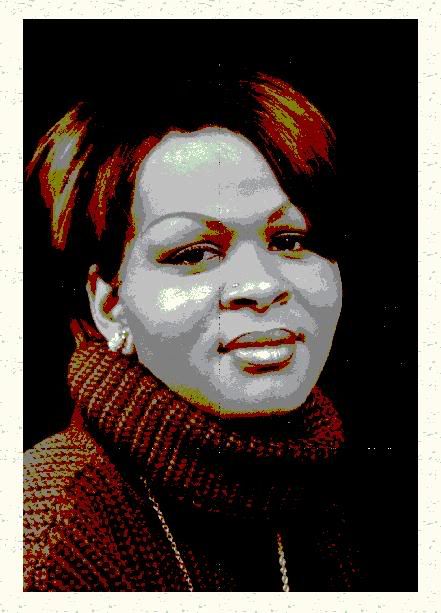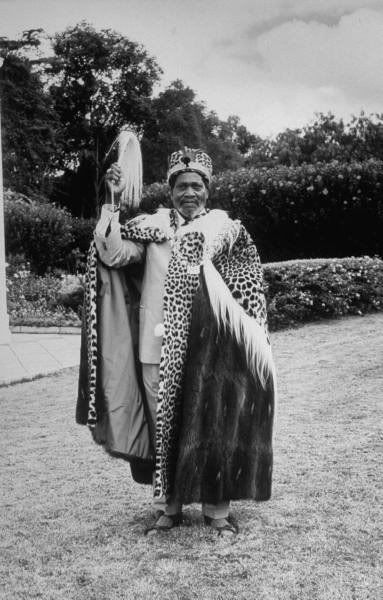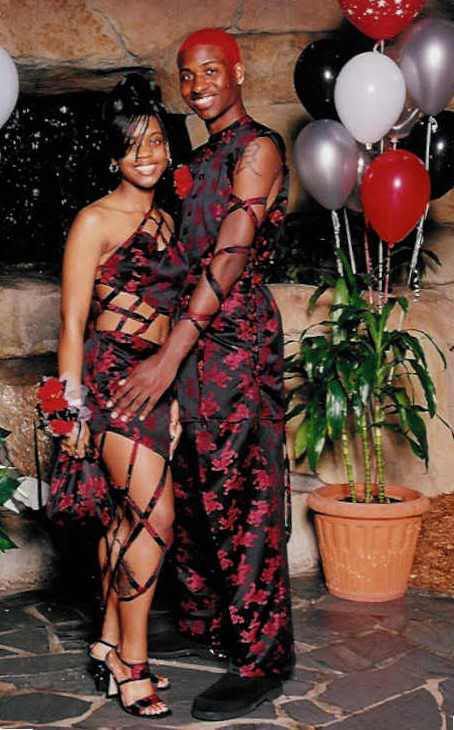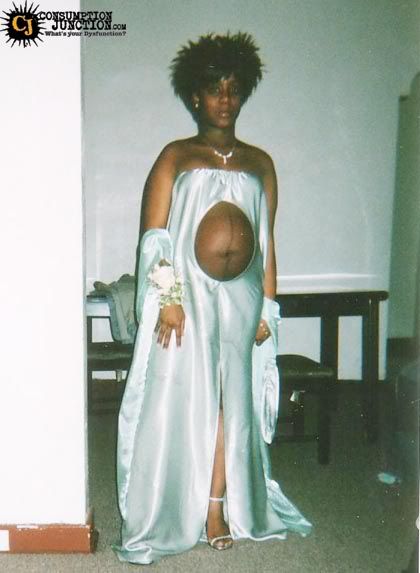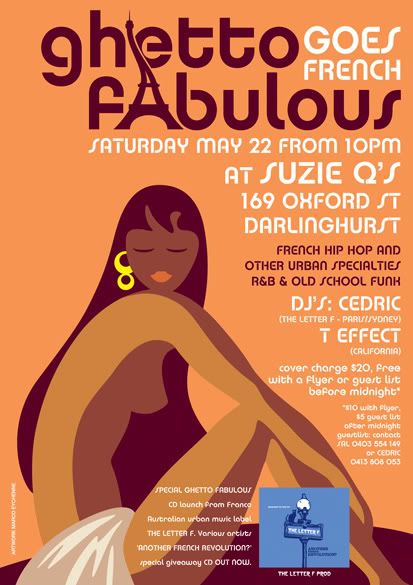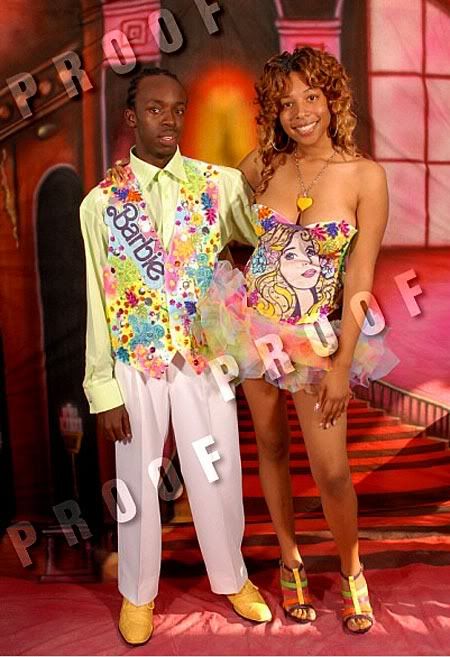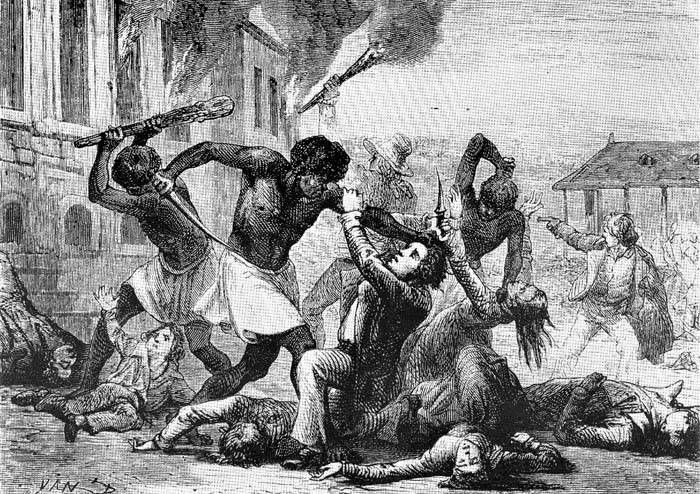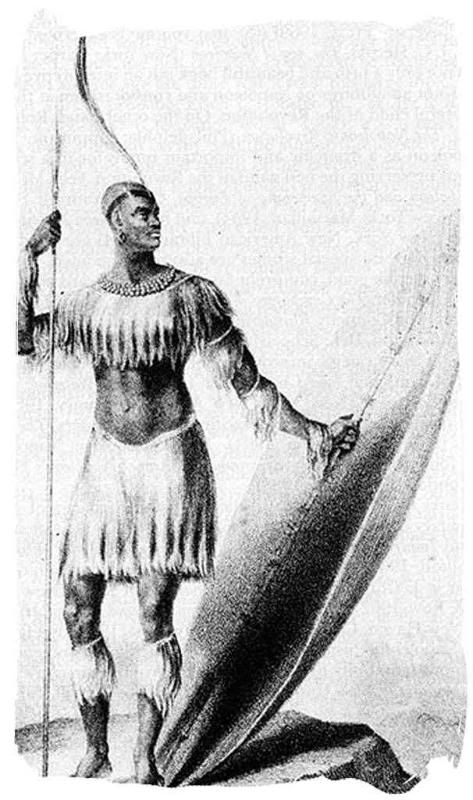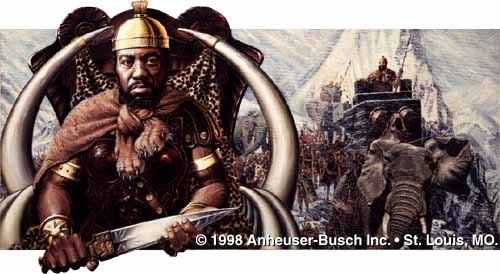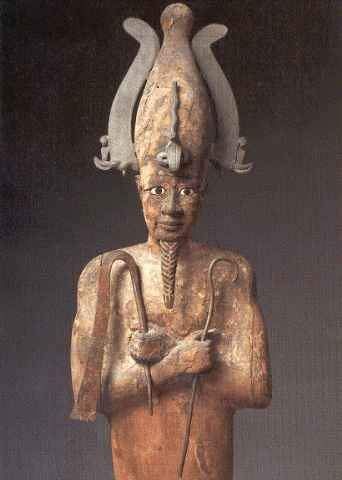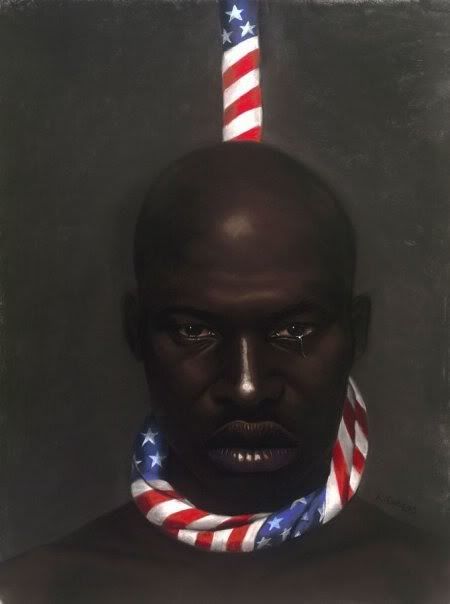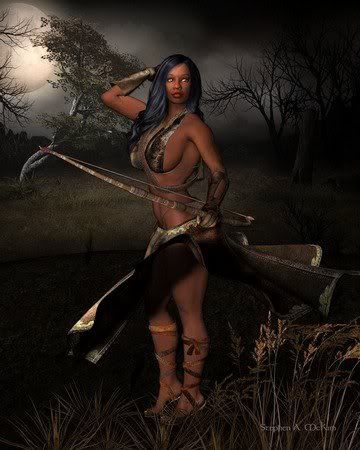
"Lack of knowledge is darker than night" (African Proverb)

Racism: Past and Present
Overall, someone said, What would I call this topic? I think I would call it "Racism: A Key Deterrent to Genuine Political and Economic Democracy in American Society." What I'd like to do is to do my best to try to give you as in-depth a view as I can about the history of racism and how it has affected us and continues to affect us in American society. I really want to lay out some basic propositions, number one, some working definitions, give you some historical background, talk about current conditions, and then go on to conclude with some suggestions for actions.
In terms of propositions, I want to lay out the following: Number one, that theories of race and attitudes of racial superiority and inferiority, prejudice and bigotry evolved into an institutionalized system of discrimination, of exclusion, of deprivation and oppression based on color or race, an accidental quality, if you will, of color/race. In the black community very often we call this a system of white supremacy or white domination. Proposition two: Racism and cultural aggression were and are highly destructive of people of color in terms of the struggle to develop and sustain community and "peopleness." This is particularly true of native people in this country and African Americans, who have been the most extreme cases of the impact of racism and cultural aggression. Proposition three: Historically, racism constituted and constitutes a system of special privileges, benefits and psychological and symbolic and material rewards for white people. Indeed, one might characterize the system as a long-standing affirmative action program for white people. Proposition number four: Historically, racism has been used and is used as a mechanism and a strategy to divide and exploit people of color and poor and working people, particularly to divide between white working-class people and poor people and whites in general and people of color. Therefore, in this regard it retards the ability to organize along class lines. The final proposition is the thesis of this discussion: That the creation of a new society with genuine political and economic democracy is impossible without the eradication of institutional racism and the breakup of white supremacy.
In talking about racism we need to have some sense of definitions. I want to do some definitions at this point. In defining racism, racism is not just simply individual random acts. Racism we see as a systematic discrimination against or exclusion, oppression of a group of people based upon an accidental quality, as in skin color, hair texture, shape and size of lips and so forth. It's systematic. It's not something that is simply random acts. Racism is to be distinguished from chauvinism. Much of what we often call racism is really not racism at all. It may be cultural or ethnic chauvinism. And chauvinism is often attitudes of superiority based on culture or ethnicity. One group of people feel that their cultural is superior to another, or one ethnic group may feel that it is better than another group. Then there's prejudice. Prejudice is simply a feeling of superiority or bias towards a personal group. Generally we talk about prejudice in terms of the pre-judging of people.
But racism is much more than chauvinism or prejudice. I might stand here and say that I think culturally or ethnically I'm better. I may have certain prejudices. And certainly we all do. But racism is distinguished by the fact that it is systemic and it relates to the question of power and capacity. That is to say, racism is about having the power or capacity to translate prejudices and attitudes or feelings of superiority into practice, custom, policy or law. That is a fundamental difference between simply saying, I don't like white folks, or, I don't like black folks, and the ability to in fact impose that prejudice in a way that impinges upon and thwarts the ability of a group to develop. I could care less whether someone likes me or not. It becomes very alarming when in fact they have the power through various institutions and mechanisms to translate that dislike into policies and customs that in fact block me and impede my ability to fulfill myself as a human being, or in fact even to do violence to my person.
In that regard, some of the terms that have come into prominent usage, particularly on the right with the advent of Reaganism and Reaganomics and Bush and the right wing, such terms as "reverse discrimination," that may be possible, or "black racism," almost an oxymoron. Can black people be racist? Yes, but it implies being in circumstances and situations where there is the capacity to take anti-white attitudes and to translate them into systems that thwart and impede the ability of white people to develop. Quite frankly, that has not been the history here in the U.S. That does not mean that you don't have black people who are prejudiced, who are bigoted, who get up and say bigoted things. But that is not in my judgment to be confused with racism. In fact, in some ways, to do that is to belittle the travail of slavery, the long history of racism and racist violence that has afflicted African people in this country.
What I'd like to do is spend a minute on the history of racism. Some of us, for many years I believe that racism always existed, that this was something that was deeply embedded in the American character, something that we had little opportunity to do anything about. In reality, race theory and racism is a relatively recent development in world history. If one were to go back and read some of the ancients, Herodotus, the Greeks and others, what we find in the ancient world is cultural chauvinism. The Greeks felt that they had the best civilization going. The Romans felt likewise. And there was prejudice and chauvinism. People fought each other based on that. But it was not on the basis of skin color, by and large. In fact, we are hard pressed to find it on the basis of skin color. Indeed, among the Greeks there were leading African people. Among the Romans there were leading African persons, some of whom became Roman emperors. As Roman emperors they thought they were better than anybody else, including other black people who were non-Roman. So that the discrimination and the kind of conflicts between groups was not about race, not about color. It was more about culture. It was more about a sense of cultural superiority or chauvinism than it was on the basis of skin color. In fact, Herodotus and some of the others who wrote about it talked about the virtues of black people in the ancient world, about Ethiopia being a place in Africa that was highly civilized. So we have to look elsewhere for this whole thing of racism as a systematic theory than in the ancient world.
Where we find it in terms of race theory and racism is in association with the transatlantic slave trade. In some respects it was an outgrowth of the transatlantic slave trade. It emerged almost as a rationale and justification for the massive human carnage that has come to be called the "African holocaust," where by some estimates 100 million Africans may have lost their lives. So you had in this regard people like Gobineau, the French philosopher/theorist, beginning to come up with these notions that there are races and that races have different characteristics and that there's a continuum of racial superiority to racial inferiority. That the Indo-Aryan or Caucasian is the superior and there are some people who are yellow who are not quite as good as the white folks but still better than others, and then brown and black and whatever. That became the continuum of superiority to inferiority. One of the most important points to stress about that is that black is the defining color. It is black/white. And even though there are other levels of discrimination involved, the defining color in terms of inferiority is black. The defining color in terms of superiority is white. So in the black community they have this phrase that sort of captures it: If you're white you're all right. Yellow, mellow. Brown, stick around. Black, get back. So in that sense, when you look at the history of how this has played out--and it's still played out--black people are always at the bottom of the ladder in terms of racial discrimination. Black is seen as the most inferior. So if you have societies like in South Africa where there miscegenation, and you have the "coloreds," the coloreds will be seen as being a notch or two above the blacks because they are seen as being better because their skin color is lighter. Even inside the African community, those who are seen as high yellow, or "light, bright and damn near white," as we used to say in the black community, are given more privileges.
When the civil rights movement first erupted in the North and the we were in Northern communities in sympathy strikes and sympathy demonstrations with those in the South, it was interesting to see people begin to hire black people and put black people visibly up front. The thing that was noticeable is, the first people they hired were always the very, very, very lightest of black people. Because there's a sense that the darker you are, the more inferior you are. So black is the defining color. That becomes important because there are often in this country and in the world manipulation between peoples of color based on skin color. So that one is from another other than African and light, very often the system will give you advantages and rewards, not quite the same as white people, but certainly more than one would get if one were black. That has to be considered in terms of this whole schematic about racism.
I also want to introduce another aspect of this discussion that is very seldom touched upon and discussed in not only racism but another insidious dimension of the oppression of black people and particularly indigenous people in this society. It is this term "cultural aggression," by which we mean the effort to take away culture or to substitute the so-called "dominant" culture for the culture of the subject people. For example, Native people and African people were often asked to adopt or to internalize the culture of the colonizer or the oppressor. For example, there was a concerted drive to have Christian and European education for indigenous people, to teach them to try to have them view their indigenous-ness or their Native American-ness or their Indian-ness as being negative. Therefore they had to become Christianized, Christianize their names as a way of becoming human and being accepted. This whole question of cultural aggression is a devastating aspect of the oppression of African people in this country. It's one that we need to understand if in fact we are to be able to look at the evolutionary development of the African community or the retardation of the African community. To some extent racism is fueled by a lack of understanding, or racial prejudice is fueled by a lack of understanding of how the African community developed. For example, people say, If my forebears could come over here and make it, what is wrong with black people? Why are they still in such a bad condition?
One of the things that has to be taken into account is the issue of cultural aggression. In terms of cultural aggression, particularly in the slave experience, African slaves were taught that their color was a badge of degradation, that their culture was a mark of inferiority, that it tainted them. There was the question of cultural disruption. If culture is the stuff that makes a people stick, and I argue that it is, that culture is the accumulated experiences of a people, the glue that make a people stick, if you attack that then of course people become unstuck. It becomes very problematical in terms of maintaining group cohesion and group togetherness. In the example particularly of Africans in North America, where the African experience was the most brutal and devastating at the level of culture--slavery was very bad in the Caribbean, in Central and South America, but only in North America was there a British-American chattel form of slavery where the African was reduced to property. Total dehumanization. In addition to that, there was a system of attempting to make sure that not too many people of the same ethnic group populated the same plantation. There was a conscious policy of dispersion. That is to say, they didn't want too many Yorubas or Hausas to be on the same plantation. Why? Because if they were there and they could communicate, they could of course then more readily engage in slave revolts. So there was a policy of spreading them out.
But not only that. The African slave was forbidden to practice their religion, to speak their language, to play the musical instruments. There was at the level of cultural aggression an effort to de-Africanize the African, to make the African something other than one's self. In that regard, this was again very devastating because it meant striking at the heart of those institutions and those dimensions that hold a people together. It's like today some of the efforts to Europeanize the Native Americans, but also the effort to go with English only and to impose European culture even on Latinos.
Another aspect of cultural aggression has to do with the fact of being black in a predominantly white society, the fact of being black in a cultural framework where white is always glorified and where black is always denigrated. That's another dimension of the struggle to survive and develop within the context of America. So it is racism, but there are also other external/internal forces which retard the development of the black community. So there's this white vs. black image in symbols. In the English language, for example, black is always seen as evil, though there are some instances in which black is seen as positive and white is seen as negative. I would challenge you to think about those and when we have our small group sessions tomorrow and you perplex about it overnight you may be able to come up with some of those illustrations. But the dominant thing is like the "black sheep" of the family. Behind the eight ball. Black market. Blackball. Blacklist. Blackmail. I was in a church one Sunday and the pastor really wanted to talk about sin real bad. He used the adjective "It is a black sin." A dark day in history. Black Monday at the stock market. You see what I'm saying? There is that constant reference to black as negative. In the movies Darth Vader. There was a movie with Sylvester Stallone and Wesley Snipes in it. Stallone was the greatest cop of all time and Snipes, I don't understand how he even allowed himself to play in this movie, the greatest criminal of all time. So here you had white Stallone and black Snipes in the traditional imagery of white is good and black is evil. You begin to internalize. There's no question. Racism is internalizing one's sense of inferiority based on this, and it's a very devastating kind of thing. A black lie is very bad, but if you tell a little white lie ... [laughter] it's okay. Or it's like angel's food cake and devil's food cake. [laughter]
European immigrants did not go through the same experience. This is important to answer that question, Why have European immigrants been able to move forward more rapidly? Let me just add another twist to it. Even black non-North American African immigrants from other places have advanced more rapidly than Africans in this country because of the question of cultural aggression. The African people who came to this country by and large came voluntarily. They came with language intact, religion intact. They were able to set up the Little Italys and Little Polands. Couched in that was a little sub-economy based on culture. The foods and various other kinds of things. Of course, they were white, so even if you wanted to discriminate against them on the basis of their Italian-ness or their Irish-ness, I really can't do it. There was a time in American history when that was tried. The Southern Europeans, the Italians and the Greeks and the Eastern Europeans were considered not quite up to snuff. They were seen as being a little darker because we've got to keep this racist thing going, and they were from the South. Many of them were Catholic, which wasn't too good in the white, Anglo-Saxon, Protestant nation. You might still have to guess. But you don't have to guess about blood. It's very evident when you look at black people who black people are. So there was a vast difference in the experience, not the least of which was cultural continuity. The Europeans came with their culture intact, and that culture could serve as a basis of integration, assimilation or incorporation into the American body politic and the American social and economic political system much more readily than has been true of Africans. So I just wanted to express that so that people hopefully have a more profound understanding of that aspect of the black experience within the broader question of racism and some of its ancillary and associated impacts.
Now what I want to do is turn to this issue of racism as an affirmative action program for white people. This is very important. Today we're having a great debate about affirmative action. No matter how much on the left people talk about affirmative action, it's almost obligatory, deep in the gut of many white folks they really do have a problem with affirmative action. They really don't understand it. It's problematical. People kind of go along, but down inside there are some questions about it. I hope I can deal with that just a little bit.
First of all, let me suggest that to the extent that there was ever anything in American society that was white only, it was a system of exclusive benefits for a particular group. White only is like having a set-aside program for white people. Certain jobs, certain things were set aside that only white people could benefit from. So therefore there's a question of power, of rewards. It's a question of it pays to be white because it translates into, white people are the first hired and the last fired. Black people are the last hired and the first to be fired. So there is a benefit, a material benefit. Does that benefit accrue to all white people equally? It certainly does not, because there's a class dimension within a capitalist society. Those white people near the top benefit more. But it still, relatively speaking, pays to be white vis-=85-vis being black in American society.
Beyond that, there is the question of intergenerational benefits and intergenerational deficits. If in fact at a particular period in time, black people or women or any particular group are excluded from work or from any particular aspect of opportunity, then the accumulated benefits from that just don't stay in a particular period of time. It is passed on intergenerationally. That is to say, it becomes a benefit that is passed on. Therefore, if you are able, at a particular point, to get the job, your father got the job and my father could not get the job in the context of then a largely male-dominated society, it would mean that those benefits could be passed on. It was a benefit to your line; it was a deficit, a handicap to my line. So to talk about affirmative action in the sense of saying, Let's abolish it. Let's suddenly be color-blind, just wipe it all out and everybody starts even, is nonsense. You're not starting just even. It's like starting a 440 and one group of people are starting with balls and chains around their legs and the race starts off and about halfway through the race somebody says, Wait a minute. I think we should have an equal race. So let's cut the ball and chain off the people's legs. By that time, somebody's at the 200-yard line, and I'm still struggling to get to the 40-yard line. So it really doesn't quite work out. There's got to be a way of compensating for the kind of intergenerational benefits and deficits that have accrued based on this kind of racism, this kind of affirmative action for white people, the set-asides and all those things that go through them.
To illustrate this in a more concrete way, and to combine points here, I want to talk a little bit about the whole question of racism as a system of dividing and exploiting also, the whole strategy of racism as a system of dividing and exploiting, particularly in terms of driving divisions among the working class. In order to do that, I want to use several quick illustrations and focus heavily on the post-Reconstruction period.
In terms of racism as a strategy of divide-and-exploit, if one goes back historically to slavery times, very often in the South slave masters would hire out their slaves to enterprises, to small businesses in the urban areas. The result of that was that this slave labor which was hired out at very, very cheap wages, undercut free labor. The problem is that the white folks who found themselves victimized by the system could never quite get the point that it was not the slaves who were the villains, that they were in fact being manipulated also. So the venom always tended to be aimed at the slaves rather than at the collusion between the white businesspeople and the white slave masters. That's been a historical phenomenon. People are deflected away from the real manipulators, the real villains. This was also true about the system called the convict lease system. After the Civil War, large numbers of people were out there, black folks, freed but freed to do what? They didn't have jobs, land, property. So vagrancy laws were passed. One of the things I often challenge my African American brothers and sisters on, we get a little beside ourselves and start talking about Europeans and how this country was peopled by criminals it's the same thing. When you had the policy of the enclosures in Europe, in England in particular, where people were thrown off the land and went into the cities by the thousands and had nothing to do, no jobs, they were not immediately absorbed, England passed these vagrancy laws and all kind of laws against paupers. As a result, many of them ended up being criminalized and arrested. Those are the criminals we're talking about. They weren't really hard criminals. They were people who had been criminalized. So we have to be careful when we talk about this country being populated by criminals. They were people who had been criminalized.
Similarly, this was the situation after the Civil War. Largely the people who went into the convict system, there were some poor white people, but they were overwhelmingly black. What happened is, the prison system would often lease out convicts to do work for companies in the community. Of course it had the same effect, to undercut free white labor. It created a great deal of animosity, though in this instance, I must say, there were some examples where white labor did rise up and fight up against the convict lease system. You're all familiar with, or should be, the history of strike breaking. Very often blacks were used to break strikes when the labor movement was organizing. Again, it's easy to become angry at the blacks who are being used in this way. In fact, what was happening again was the manipulation of blacks by the bosses. Not enough anger directed against the bosses, a hell of a lot of antipathy towards black people, part of which had to do again with the question of racism.
I want to focus on the post-Reconstruction period, because I think this is very illustrative of some of the things that are going on today. It will also deal with some of the points that I'm trying to make around the affirmative action issue. After the Civil War, there was a period called radical reconstruction or black reconstruction. Radical reconstruction because there was the passage of the Thirteenth, Fourteenth and Fifteenth Amendments and another little-known act, the Civil Rights Acts of 1868 and 1875. In black or radical reconstruction, black people had more power than any other time in the present. There were black elected officials, black legislators who acquitted themselves well and passed a lot of very progressive legislation. There were some problems, but by and large for a people inexperienced in governance, they did an incredible job. They were, however, governing at the behest of the Republican Party, who sold black people out in 1876-77. I won't go into all the details of it. In 1877 all the federal troops were pulled out of the South and the plight of the so-called Negro was turned over to the so-called redeemers in the South, a new, emerging white power elite.
One of the pledges that these redeemers made was that they would not brutalize black people, and they indicated that they preferred to associate with the better class of Negroes than with what they themselves called "white trash." The problem is that something happened in the South. Therefore there was not the imposition of this Southern apartheid, this Jim Crow system that we fought to overturn in the civil rights revolution of the 1960s and 1970s. There was not the immediate imposition of that. For a while after 1877, the first three or four years, everything was sort of okay. Black people continued to vote, to be on public conveyances. Things were different, but not radically so.
But there was a development. In one of the rare moments in the South, you had a development where large numbers of white farmers and white workers formed a movement called the Populist movement. In that movement they were demanding economic justice. They were opposed to and angry at policies that were being passed which they saw as being antithetical and oppressive to their interests. The rarity is that they also worked out to a large movement of black farmers and black workers, particularly the farmers, who were organized into Negro farmer alliances by the thousands. They reached out to them. They joined hands in this movement and they came dangerously close, from the perspective of the ruling class in the South, of overturning the system through the electoral process. They were winning some seats. They came very, very close.
This set off an alarm in this elite that wasn't too concerned about black people. They made a decision that never again would this alliance of blacks and whites threaten the interests of the power structure in the South. It was only at that point that they instituted this system of Southern apartheid. They did it by appealing to racism, to race. They said to their white kith and kin, Come on, now. This is an argument among white people here. Why do we have niggers involved in this? We can settle this. We should not have black people interfering in white folks' business. So we can work this out. Unfortunately, the white Populist movement and its leadership fell for this. There were a number of things that were done to reinforce this split, this division among working-class people. You have then entering Jim Crow. You had the psychological incentives. It paid to be white. You could have your own water fountains, just for white people. When you have to go into certain essential functions, like going to the Jane or john, you'd have your own bathroom. After all, imagine the indignity of having to sit down and take care of this essential business with a darkie, a jungle bunny, next door.
So white people were given their own bathrooms, their own water fountains. You didn't have to ride on public conveyances with niggers any more. These uncivilized jungle bunnies, darkies. Indeed, even when you died, you'd be able to have death in dignity. You had your own cemetery. The niggers will have theirs over there, and everything will be just fine. But it went further than that. Those were the psychological incentives of white paying off by having these special privileges. But they added material incentives, which went like this: there would be certain jobs that only white people can work. We will set aside--I use that term advisedly--certain jobs that only white people will be allowed to work. And if there are jobs where black people and white people have to work the same jobs, then white people will always be paid more, considerably more, for working those jobs than black people will be paid. So what you had was a system of psychological and material incentives to drive a wedge between blacks and whites.
The fact of the matter is, both blacks and whites were being exploited by the big white man. The big white boss was exploiting blacks and whites. Blacks were being exploited more, but the poor whites were only slightly better off, actually, having these material and psychological incentives. The real deal is, these cats were getting off like bandits all the way to the bank with the loot that they were expropriating--if I'm allowed to used that term--from the labor of both black and white. The point is that this wedge was driven. Racism used as a strategy of dividing and exploiting working people. That has been unfortunately a deep and embedded part of American history that we are forced today to try to overcome.
As a quick aside, we did have the Knights of Labor, which had a strong program of racial inclusion, the Longshoremen's Union, the Wobblies, any number of other groups who did an excellent job of including black people in their ranks in terms of fighting for labor rights and for economic and social justice.
I want to come back just for a minute to those set-aside programs. Not only to look at them from the North, but to make the point that while this was a Jim Crow system in the South, it was also a Jim Crow system in the North. Black people moved to the North because there was a promise of better jobs. And they got better jobs. Another side bar is, black people unfortunately were held in the South as slaves, wage slaves, sharecroppers, agricultural laborers and tenant farmers after the Civil War. One of the things that those of us who talk about reparations deal with is that we had political rights--we were made citizens--but we did not have social rights. We were not given land and capital within a capitalist society. It's very difficult to compete. So black people would have loved to come to the North earlier. But one of the things that happened is that there was a conscious collusion between Northern industrialists and the power structure in the South to keep black people in the South, keep them working in these low-wage paying jobs, or sharecropping. Because cotton still remained king for a long period of time after the Civil War. What happened is, therefore, the demand for labor that went with a growing capitalist economy in the North, Northeast and Midwest was filled not by black people, who would have loved to have these jobs in the industrial sector, but by millions of European immigrants who came across. Here's what I want you to look at: Even though we had to struggle to get better working conditions in the labor movement for white workers or workers in general, because people were being paid a low wage, working in a factory or a mine or a steel mill was a hell of a lot better and paid a hell of a lot more even at the lowest level than being a sharecropper. In other words, if black people could have moved North and taken those jobs, they would have been economically a hell of a lot better off. But in fact they were held in the South. Other people came in, took those jobs, and therefore had a step up in economic terms on those who had been locked in the South. When black people did come North, they ran into the same system. My father worked in the steel mills. In my lifetime I remember jobs that black people could not work in. They could not work in the upper echelons in the steel mills. They were frozen out of those jobs in Cleveland, Ohio, in Pittsburgh, in Youngstown, Ohio. So the point is, this question about affirmative action and set-asides, there was this system of affirmative action for white people in which the benefits accrued intergenerationally to people who now are better positioned in American society because of these racial set-asides and this affirmative action program. I just want to drive that point home again. So therefore, affirmative action, while not perfect, is a remedy that we need to look at.
Having made the point about racism as a system of divide-and-exploit, let me now turn to more contemporary history. I submit to you, as we look at these churches burning all across America, as we listened to the story of my Canadian friend who talked forcefully about listening to talk radio and how alarmed he is as a Canadian who comes here and listens to these talk shows and says, God, what's going on in America? because he hears so much venom spit out, or listening to the CB radios, the truckers, as they talk about welfare mothers and jungle bunnies and spew out some of the most virulent, bigoted and prejudiced attitudes, then you see these church burnings, which now are nearly eighty that have been identified of black churches that have been burned. The anti-immigrationism, the homophobia, the attacks on immigrants, the attacks on lesbian and gay people are serious problems. A part of that has to do with racism in American society. I would submit to you that is a part of the bitter harvest of the last fifteen years in which racism has been allowed to become sort of okay in American society, under the guise of dealing with a civil rights movement that's gone too far, that is encroaching on the rights of white people.
For example, the critical subtext of Reaganism and Reaganomics was race. It was another effort to divide and exploit that worked extremely well. Ronald Reagan was a B movie actor, but he deserves the Academy Award of the century as President of the U.S. because he fooled a hell of a lot of people with his performance as President. He persuaded the American people at a time of crisis, of stagflation and insecurity, that the burden of government had to be lifted off the backs of the American people. Translation: All of those black people and people of color who are on welfare, food stamps, all these social programs, burgeoning entitlements that are really the cause of the crisis in American society in terms of jobs and insecurity. So therefore what he did was a massive scapegoating job: welfare, food stamps, social programs. He focused on the ghettos, the barrios, the reservations. This was the burden on government. Therefore crippling cuts, transfer payments, increase the military budget. He didn't cut the budget. He transferred money to the military budget. He transferred money to the rich and the super-rich, loosened up the regulations on banking and savings and loans and any number of other things. He helped to produce the one of the greatest scandals, if not the greatest scandal in American history, the S&L scandal. It's very interesting, because there were no welfare mothers or homeless people involved in the S&L scandal. We're talking about modifying the behavior of welfare mothers and making them more responsible and accountable. What about $600 million or a billion dollars over thirty years? What about that? And not having these so-called "reckless" people involved in it?
The civil rights movement and all of the social movements of the sixties really benefited as many white people as black people. In fact, they benefited more white people. This movement that emanated out of the black community did not take rights away from white people. It guaranteed more rights. Social and economic rights. Because there are more white people on welfare than black people. There are more white people on virtually every one of these programs than black people. Black people may be disproportionately on these programs on the basis of their condition, but they have also serviced in a very admirable way large numbers of people. And yet, we have white people who really believe that black welfare recipients get more than they get. There are white people who really believe that black people get more benefits. In these church burning things where they're trying to say there's no linkage, in one of the incidents, the people who were arrested said they attacked black churches because in the black church they were teaching people how to get on welfare. There is this sense of welfare as the burden on the back of people.
So what we see here is this diversion. In the Reagan Administration we know that the white rich got richer. White men got richer. And the poor got poorer. And yet that was not the focus. People don't talk about the S&L scandal. They don't talk about the HUD scandal. They don't talk about the FDIC. They don't talk about the obscene fortunes. Michael Milken, how much did he make? He paid back $600 or $700 million. He still was able to keep about a half a billion dollars. Obscene fortunes were being made. As Jesse Jackson talked about merging, purging and submerging the U.S. economy. And yet people were angry at black people and people of color, as opposed to being angry at corporations, the rich and the super-rich. Another instance of dividing and exploiting and a digression away from the real issues, the real contradictions, the real victimizers.
Having blinders, racial blinders, Joe Six-pack, pissed off and angry because things are going bad, but never realizing that he is as victimized by corporations and by the agenda of the radical right. In fact, one of the anomalies is that forty percent of labor voted for Ronald Reagan. Even today, this agenda of the radical right, one asks, How could it be sustained by the majority of the American people, or even the majority of those who voted in the election of 1994 if it is in fact against Medicaid, against Social Security, against all the cultural rights we see reflected in the New Deal that benefit not just black people but the American people in general, how could that happen? It could only happen in my opinion because racism is the critical subtext for policy in this country.
Remember Willie Horton? Affirmative action was supposed to be the wedge issue in this action, though it may not be, but certainly immigration will be one of those issues. Clinton even went out to beef up the border patrol so everybody knows he's on the right side of this issue. Pete Wilson was a few years ago promoting immigration, even so-called illegal immigration. When the radical right's agenda was put forth he changed his position. Dole was originally a moderate who was for affirmative action. But because the wind is blowing a certain way he is now against affirmative action. Why? Because he's playing politics. What has happened in this country is that people are playing politics, racial politics. They're playing the race card as a way of dividing and exploiting.
Meanwhile, America has the greatest inequality of any Western democracy. In Z magazine it was reported.
I'm not going to give a litany of all the crises in communities of color. They are very deep. Suffice it to say that there is a serious avoidance of a debate and a discussion about racism in American society. One recalls when Lani Guinier was chumped off by her dear friend Clinton, he said in part that he did not want to see a divisive debate on race in American society. It's not just a matter of past racism; it's a matter of ongoing racism. One out of five instances in American society where black people who have exactly the same qualifications as their white counterparts go to the bank to get a mortgage, they are denied. This also applies to franchises or instances like Denny's, where black people were insulted in franchises. So racism is rampant in American society. There are instances now where black people are being chased out of white neighborhoods. All kinds of things are suggestive.
More important, at the institutional level there is the question of urban policy. There is no urban policy. There is no plan to deal with resuscitating inner-city education. As Richard Moore of the Southwest Organizing Committee said, We are the wrong complexion to get the protection. Urban policy is driven, suburban and urban. And even good old President Clinton, consciously launched his last campaign in the suburbs. He would not go in to black communities before six o'clock in the evening because he did not want to be seen on the six o'clock news. So he did all his campaigning, a very racist kind of campaigning, after six o'clock. You all know about the African American mentally deficient person who was executed. And right to this day, Clinton only spoke out on this issue of the black churches being burned because we forced him to speak out. He should have spoken out a long time ago. But again there was this trepidation about really dealing with this issue of racism. In the process what has happened is you have the Freemen and all these racist and white supremacist groups going up.
What do we do about it? There are several points I want to stress as we close. One, it seems to that it is important as many of you in this room support the issue of multicultural education. Multicultural education and diversity training are important. It's imperative to dispel myths and lies and misinformation because in so doing we undermine the pillars of white supremacy. A lot of this is simply predicated on misinformation. There's a book by Carter G. Woodson called Miseducation of the Negro . I submit that the same proposition applies to most of the American population. We are miseducated. We know very little about Latino history, very little about indigenous history, very little about African American history. What if in fact Howard Zinn's A People's History of the United States was a standard textbook? The impact would be different in terms of how we saw the world. We're struggling now with feminist studies, lesbian and gay studies. All of these things are designed to break up this white male hegemony. That's what the Contract on America's all about. There is a perception in this country that it's a white country, that if you accommodate to this white, Anglo-Saxon, Protestant milieu culturally and politically, it's fine. But if you challenge it, that's deep fear, deep anxiety. And some of this lashing out is about that. But we have to relax and deal with it. America is going to be the first country, and we have to prepare for that in terms of the future. In fact, by the year 2050 it's estimated that America will be better than fifty percent people of color.
We must wage a relentless struggle to ban discrimination in all of its forms. We cannot relax on that struggle. To enforce all civil rights laws in the search for meaningful remedies to heal the damages of racism and cultural aggression. That includes reparations, which is not popular, but nonetheless I think essential. The goal of the society is not so much integration and assimilation, at least from the vantage point of most African Americans. It is a question of equity and parity. The ability to be able to gain access to American society and to be equal and on par with other groups within American society. So we need to fight to end the underdevelopment. Manning Marable wrote a book called How Capitalism Underdeveloped Black America. We need to talk about how to end that underdevelopment.
We need to talk about corporate and individual responsibility and accountability in terms of programs that could focus on helping to remedy this condition of underdevelopment. We need a concerted, scientific and systematic program to fight racism in the white community, particularly among poor and working people and the middle class. Can we afford to not work on racist attitudes in white communities? This is a major challenge that I've been dwelling on now for many years. Whites often ask about the question of organizing in communities of color. I would say, Yes, there's nothing wrong with that. But there's a priority of working and organizing against racism in white communities. Anti-racism campaigns in white communities. If one chooses to work with, not in but with, communities of color, the goal must always be organizing with communities of color to organize and empower these communities and for them to more effectively lead themselves around an agenda that they see as essential and important. In many respects we have to also struggle against not only racism but paternalism, the whole notion that somehow these people are just not able. There's a great fear in the black community often that people who come in from the outside really want to get off their jones and lead in the black community, as opposed to enabling and empowering and supporting the movements in that particular community.
There are some guidelines that one should take into account in this regard. We should always respect the culture and identity of communities of color. Respect the leadership and agenda of peoples of color. Serve as a facilitator, not the leader. The facilitator, the enabler, the supporter, as opposed to the leader. Predominantly white organizations should always have people of color in critical roles on their staff so they can take the lead in organizing in communities of color. This doesn't mean that only white people can organize in white communities, or black people in black communities. There are some priorities that we're speaking about here. We could have interracial teams doing work, and we certainly need interracial collaboration on strategies to move this work forward. Certainly black people and people of color need to take the lead in organizing in their own communities.
People of color caucuses are also important within predominantly white structures. People should not see them in a frightening kind of way. They should not be fearful of people of color caucuses. Indeed, they often have women's caucuses and lesbian and gay caucuses within structures. So these are some very brief guidelines.
There also is a need for joint work. In fact, we cannot do this simply by seeing the Klan show up and throwing rocks and bricks at them and cursing at them profusely. That is simply not going to solve the problem. That's sometimes our definition of anti-racism work. We get out, the Klan shows up, all seven of them, three hundred of us show up, throw rocks at them, call them bad names. We go home and we've done our work for the year. We need some real serious, joint work based on mutually acceptable agendas of issues. One of the things that I pointed to in my discussion this afternoon, one of the areas I'm very keen on is environmental justice, fighting against environmental racism, environmental deprivation and uniting in the struggle for environmental justice. It is a common-ground issue that deals with issues like housing and health and community development. All those issues are encapsulated in that.
We must recognize the centrality of the agendas and leadership in communities of color in the struggle to create a new society. I happen to believe that those who have been most victimized by the systems of society must be in the forefront, must be in the lead, not only in terms of rescuing themselves. As I look at the church burnings, I've just written an article, in which I say that black people must seize upon this opportunity not just to talk about the church burnings, but to talk about the broader sets of issues, to use it as an opportunity to emerge as the moral conscience of the nation. In that regard it's not just about black people. It's about all people who are oppressed. I think there's a way in which African people and people of color are at their best, that is the kind of tradition that is advanced, that does move the struggle forward in some very vigorous and important ways. So I think it's important in the struggle for a new society, and that's what we should be talking about. We're not really fighting against racism so we can have better race relations. So we can all sit down and have tea together. That's fine. But not within the context of an exploitative society. The real challenge, our real mission is to fundamentally transform this capitalist political economy. To create non-oppression structures, to create structures that are human-centered, that are earth-centered, which means that there is a fundamental transformation which must take place. To have that we must have racial justice, not just good race relations. Racial justice is an indispensable prerequisite to the overall struggle for a better society, as is gender equality and rights for lesbian and gay people and the eradication of religious bigotry. All of these things become critical cornerstones to the new society which we must forge and which we must build. I happen to think that the struggle against racism, as Du Bois said, the problem of the color line, the color barrier, will be the barrier of the twentieth century and may well be into the twenty-first century.
So I close this vignette on racism by simply saying that to talk about fighting against racism is to talk about revolution. That is to say that we need to struggle against racism so that we can in fact create a force that will be at the cutting edge of the fight for social transformation and the creation of a new society and a new world. Nothing else really makes sense. It's not really an academic discussion. It's not an academic exercise. This is a real-life discussion about what's going on right now, the threats that it poses. If one looks today, and I could talk about the whole question that we have been debating, I've written a series of articles about, Is this a second post-Reconstruction? In many respects, 1996 looks like 1896, not only in terms of the turning back of the clock on black progress. If you understood what I had to say about the whole divide-and-exploit strategy in the post-Reconstruction period, it is also a period in which using racism is also thwarting the development of average poor white and working people in the middle class to fulfill their aspirations. Because they are blinded to the realities and the contradictions of the accumulation of wealth and power in the hands of the few. So if we are to unite the many to defeat the few--and we must--then the struggle for racism is indispensable. We cannot really achieve a society based on genuine economic and political democracy unless we win that fight. And brothers and sisters and friends, I know that we will.
Thank you very kindly.


